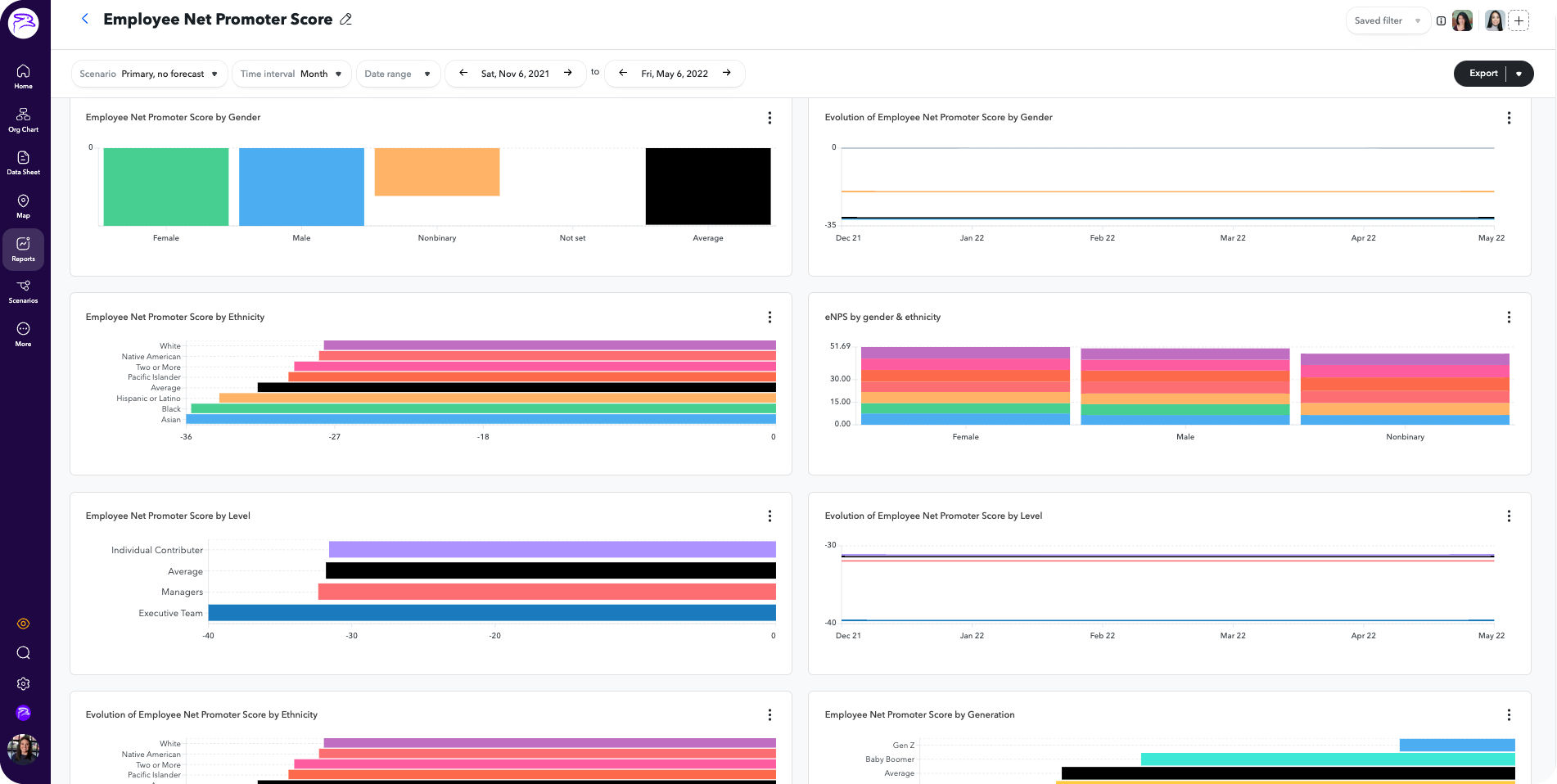
It goes without saying (but we’ll say it anyway): You want to hold onto your top talent.
Retaining your people reduces company costs. When someone leaves, it takes significant time and resources to interview candidates, train new hires, and respond to the loss of productivity from the former-employee’s team. In fact, Gallup estimates the cost of replacing an individual employee ranges from one-half to two times that person’s annual salary.
When employees stay at a company, they can build skill sets, develop relationships with colleagues, and help establish streamlined processes – all of which lead to a satisfied, more engaged workforce. Therefore, it’s cyclical; high retention rates lead to happy employees… which lead to high retention rates.
But a strong employee retention strategy doesn’t just happen overnight. It takes intentional planning and constant monitoring to ensure you’re meeting your goals and keeping your people happy.
Luckily, there are strategies to ensure you’re retaining your top talent. Read below for three recommendations to help make your retention efforts a success.
Before implementing any strategies and measuring their effectiveness, calculate your employee retention rate as a baseline. To do so, pick a time period to assess. Some companies prefer quarterly analysis; others that aren’t scaling as rapidly look at annual retention.
Either way, make sure you’re consistent, since falling out of the data-collection-habit can potentially lead to issues or missed opportunities. Alternatively, when tracked and used right, your retention rate can help avoid a talent shortage and push you to create positive change in your company.

Now that you have that baseline, let’s start strategizing.
One third of employees know whether they’ll stay at their company long-term after – wait for it – the first week. Insane? Not quite. That’s because first impressions are powerful. In fact, Princeton’s Department of Psychology found that the brain only takes a fraction of a second to determine desirable character traits, such as trustworthiness.
So if the first impression your new hires have isn’t the best, well…let’s just say you may have a future attrition problem on your hands. But besides ensuring your Talent Acquisition and People teams provide a superior employee experience to new hires, you’ll also want to actually employ the right people.
Ai-Mei Zhu, Manager of ChartHop’s Talent Acquisition team, believes that being selective about who you bring on board sets your team and company up for success. She also encourages candidates to be particular as well, stating: “We always ask candidates to treat our interview process as a two-way street. They should be interviewing us as much as we are interviewing them.”
Another way to guarantee you’re attracting the right candidates is through transparency. By including specific role requirements, qualifications, and compensation on job descriptions, you’re automatically reducing your time-to-fill and narrowing down your candidate pool for the perfect fit.
What’s more, when companies are transparent about expectations, new hires can enter their first week feeling confident about accepting the role. Zhu explains, “Being transparent throughout the interview process is key to ensuring candidates know the ins and outs of a role so there are no surprises when they start.”
It’s no secret that employee engagement benefits everyone. When your people are engaged, they have higher attendance, performance, and likelihood to stay with your company. Engaged employees also have a better sense of wellbeing, which creates a happier workplace environment.
One way to help your employees further engage is to establish (or continue to prioritize) a supportive and inclusive culture. Ivori Johnson, ChartHop’s Director of Diversity, Equity, Inclusion and Belonging (DEIB), says this “may mean challenging the current system and moving into uncomfortable but necessary territory, including internal work of shifting behavior and biases.”
While creating this kind of culture won’t happen overnight, you’ll eventually experience a company-wide, long-term transformation that will attract and retain employees.
So where do you start? Johnson notes themes she’s witnessed that help companies implement more successful DEIB initiatives: They establish a dedicated DEIB team, create objective career frameworks, put leadership at the forefront of company culture, enact salary transparency, and collect (and use) people data.
As for the latter, it’s critical to use a people operations platform that allows you to view metrics side-by-side. Doing so will help you notice any intersectionalities, which will in turn drive action and change for your organization.

The right people operations platform will help you filter and compare your people data to help strengthen retention efforts company-wide.
Let’s cut to the chase: If your company doesn’t focus on their employee experience, your people are going to leave. Your employees no longer want perks like catered breakfasts and pool tables in the break room. Yes, a tiger-tail doughnut is nice, but do you know what’s better? Working in an environment in which you actually feel valued.
And while cultural transformation won’t happen overnight, implementing the following will help you move the needle slowly but surely.
It’s natural for employees to move onto their next opportunity, whether it’s another company, field, or retirement. That doesn’t mean you can’t make that choice a little bit harder.
When you invest in your people, you create an environment that’s proactive, responsive, and inclusive. And since people will stay – and want to work – at an organization that makes an organization that puts its people first, prioritizing your employee experience is a sure-fire way to increase your retention rates.
Sign up for a free demo today.